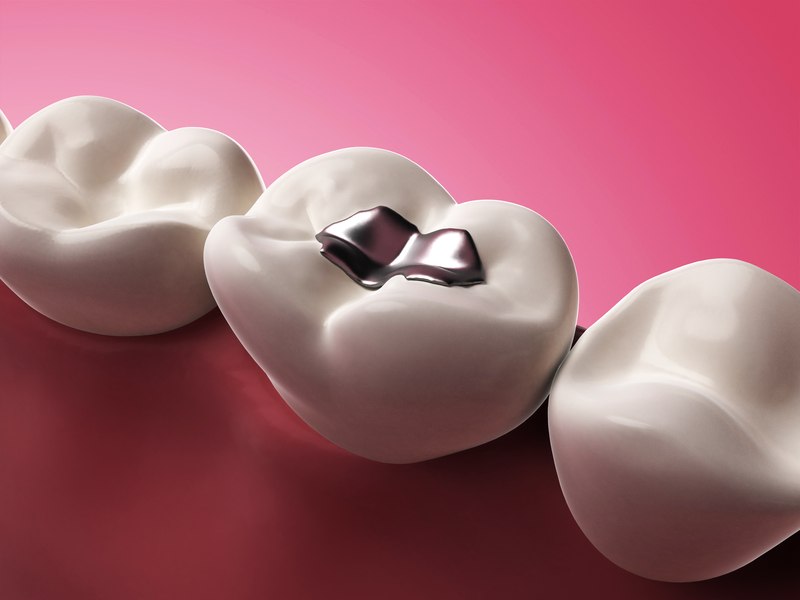One of the most insidious toxins in our environment is mercury. Mercury is a pervasive toxin that is a staggering environmental problem. It is in our water, food, & air. Without a clear understanding about these routes of exposure and the potential hazard it poses to one’s health, many individuals easily accumulate a mercury body burden over time. Mercury is extremely toxic to brain tissue, and could be a significant risk factor for Alzheimer’s disease in some individuals.
There is evidence that mercury in brain tissue at levels below those found in many humans, can produce the same lesions characteristic of those found in Alzheimer’s disease (AD).(1.2) While there is an increased awareness about fish being a common source of mercury exposure and a risk for neurodevelopmental problems in unborn and young children, many individuals are not aware that dental amalgams containing mercury can be detrimental to their health.
Studies using animal subjects with dental fillings (amalgams), concentrations of mercury in vulnerable tissues like the brain and kidney were considerably elevated over control subjects without amalgam and in controls administered oral doses of mercury.(3)
Despite the considerable evidence with regard to mercury in dental amalgams resulting in increased body burden of mercury, the American Dental Association holds fast to their stance that mercury is safe and does not cause any adverse health effects. Animal and human studies show that mercury is continuously released from dental amalgam and absorbed by several body tissues.(4)

3d rendered illustration of an amalgam filling
Mercury in dental fillings corrodes in the mouth releasing dangerous levels of mercury vapor. Please see a graphic video of that below. The mercury vapor is inhaled into the lungs, entering the blood circulation and infiltrating into the entire body. Another concern is the mercurial vapors emanating form dental fillings (amalgam) containing mercury. Mercury leaking form dental amalgam can settle in the mucous membranes within the upper region of the nasal cavity exposing brain tissue to mercury.(5)
In research using fish to examine the vector for mercury accumulation in the brain, the authors stated: “The fact that mercury is transported along fish nerves can be extrapolated to humans, as nerve transport also occurs in mammals, including humans. Thus, mercury and other toxins could possibly accumulate in human brains via nerve transport.” For a comprehensive overview on the uptake of metals like mercury into the brain, I highly recommend chapter 3 from “Metal Ions and Neurodegenerative Disorders” By Paolo Zatta.
Could mercury be putting you at risk for Alzheimer’s disease? The cause and effect is not absolute. However, when you stop to consider that complex health disorders always have multifactorial components that stimulate the expression of that disease, it is not a stretch to implicate mercury as a potent contributor to the neurodegenerative processes that occur in some individuals that go on to develop Alzheimer’s.
Higher mercury concentrations have been found in brain regions and blood of some patients with Alzheimer’s disease.(6) In light of such findings, and the evidence noted above, would you want to be putting yourself at risk with a potent neurotoxic exposure?
Mercury toxicity is a considerable risk factor for cardiovascular, and neurological disease. Of course, it is not the only risk factor to take note of. In conjunction with other risk factors that include dietary habits, lifestyle factors, genetic risk variants (e.g., ApoE4), and the chronic inflammation and oxidative stress associated with all, mercury burdens may add a significant risk to your brain’s health and the potential for increasing the risk of developing AD.
The mechanisms for mercury-induced neurotoxicity include:
- increased accumulation and deposition of beta-amyloid protein,
- increased formation of reactive oxygen species,
- excitotoxicity due to inhibition of synaptic glutamate reuptake, and
- increased neuroinflammatory reactivity of microglia. (7)
Articles here at TheAlzheimerssolution.com that will shed more insight into beta-amyloid protein, oxidative stress, neuroinflammation and excitotoxicity can be accessed via these links:
Plaques and Tangles in the Alzheimer’s Brain-Which One Is Most To Blame For Alzheimer’s Disease?
Mercury Depletes Glutathione Peroxidase-Toxic Mechanisms In Alzheimer’s Disease Risk
Inflammation and Alzheimer’s Disease—Cause, or Effect?
PFAS—The Little-Known Forever Chemicals are Emerging as Dangerous Neurotoxicants
To protect your brain and your health, the evaluation of risk associated with potent neurotoxins such as mercury is recommended. If you are an ApoE4 carrier, it may be essential. The ApoE4 genetic variant carrier does not detoxify mercury from the brain as well as the ApoE2 variant and it is suggested that ApoE4 could serve as an important biomarker for the risk of AD in individuals that have a history of chronic mercury exposures. (8)
Safe amalgam removal and replacement is a option and should be handled by an experienced dentist that takes all the precautions necessary to mitigate exposures in the removal/replacement procedure.
References
1. Mercury Induces Cell Cytotoxicity and Oxidative Stress and Increases β-Amyloid Secretion and Tau Phosphorylation in SHSY5Y Neuroblastoma Cells.
G. Olivieri, Ch. Brack, F. Muller-Spahn, H. B. Stahelin, M. Herrmann, P. Renard
M. Brockhaus, C. Hock.
Journal of Neurochemistry Volume 74 Issue 1 Page 231-236, January 2000
2. Retrograde Degeneration of Neurite Membrane Structural Integrity of Nerve Growth Cones Following In Vitro Exposure to Mercury.
Leong, CW; Syed, NI; Lorscheider, FL.
NeuroReport, 12(4):733-737,2001
3. Dental amalgam mercury exposure in rats.
Galić N, Prpić-Mehicić G, Prester L, Blanusa M, Krnić Z, Ferencić Z.
Biometals 1999 Sep;12(3):227-31.
4. Amalgam studies: Disregarding basic principles of mercury toxicity.
International Journal of Hygiene and Environmental Health, 2004 –Elsevier
J. Muttera, J. Naumanna, C. Sadaghiania, H. Walacha and G. Drasch.
5. Uptake of metals in the brain via olfactory pathways.
Tjälve H, Henriksson J.
Neurotoxicology. 1999 Apr-Jun;20(2-3):181-95.
6. Mercury and Alzheimer’s disease.
Mutter J, Naumann J, Schneider R, Walach H.
Fortschr Neurol Psychiatr. 2007 Sep;75(9):528-38. Epub 2007 Jul 12.
7. Mercury Exposure: Effects Across the Lifespan
Katherine H. Taber Ph.D.Robin A. Hurley M.D.
Neuropsychiatry. 2008 , Volume 20, Issue 4, Pages iv-389
8. Apolipoprotein E genotyping as a potential biomarker for mercury neurotoxicity.
Godfrey ME1, Wojcik DP, Krone CA.
J Alzheimers Dis. 2003 Jun;5(3):189-95.





